When you dive into the world of macrame, you'll find that there are many different cords or ropes you can use. You may be wondering how to best use each type. We have thoroughly reviewed the available information and put together a guide to help you get started.
The cords used in macrame are typically separated into three categories, which are string, rope, and braided rope. Here are some of the ways you may use the different types of cord.
- Macrame rope: the most common, versatile cord for beginners
- Wax-covered or synthetic rope: great for outside projects
- Braided macrame rope: good for weight-bearing projects
- Macrame string: great for tiny knots and straight fringe
Choosing the right type of cord or rope for your project may seem like a complicated task. We'll break down the most common uses for each cord type and how you might use them. Keep reading as we go over the differences between rope and string and whether you can use regular yarn for your project.
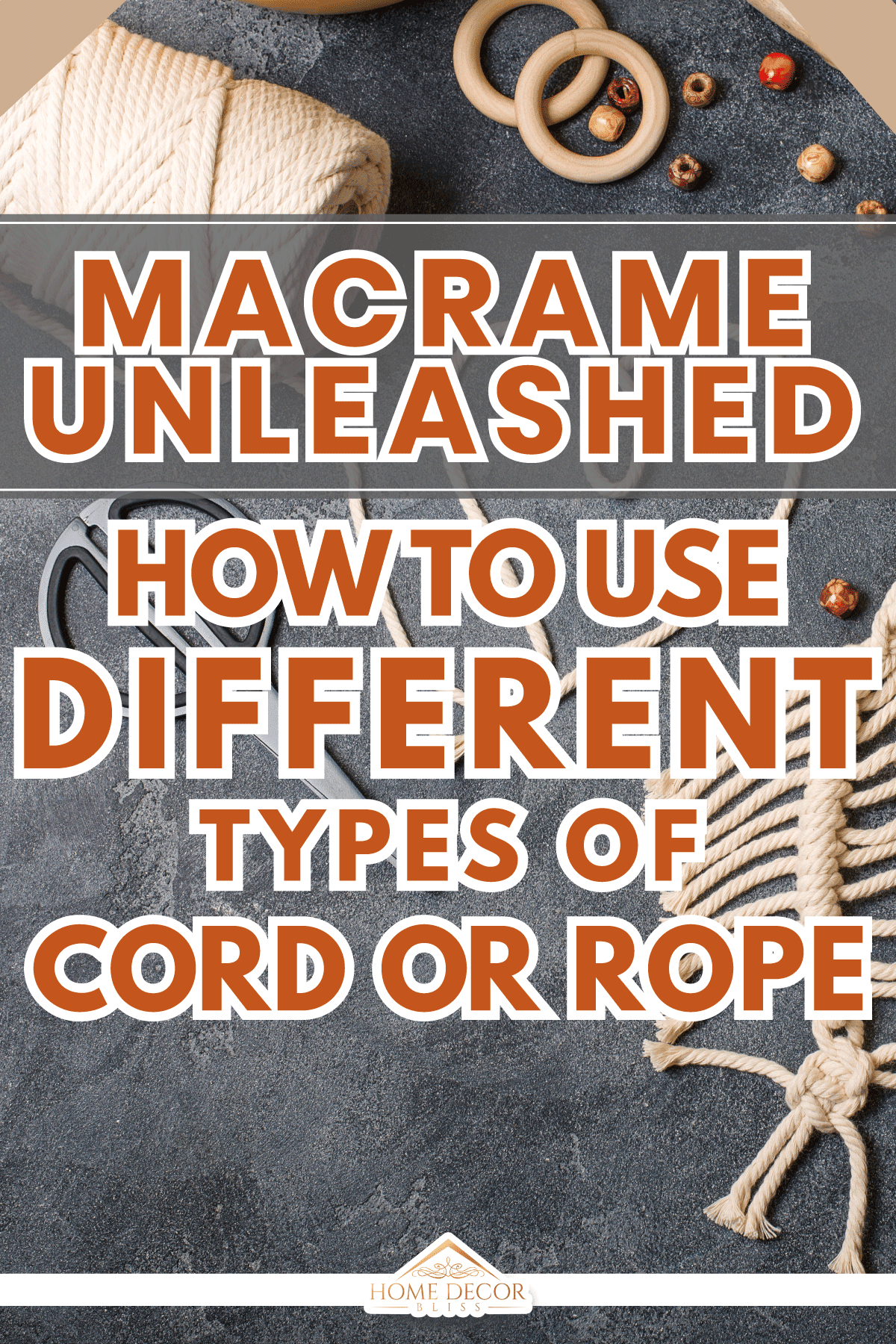
How To Choose Macrame Cord For Your Project
When choosing the suitable cord material and type for your project, you'll want to consider whether your project will be functional or decorative. For decorative wall hangings, you can use finer macrame string.
You may need to work with a braided cord for items that will see more wear and tear, such as furniture coverings or functional art like coasters, potholders, or rugs.
You'll also want to consider your skill level and dexterity. Many beginners find that macrame string, although it produces a finer, softer product, can be difficult to work with. The same is true for heavy braided rope. It can be hard for beginners to work and creates large, tough knots.
What's The Difference Between A Macrame Cord And A Rope?
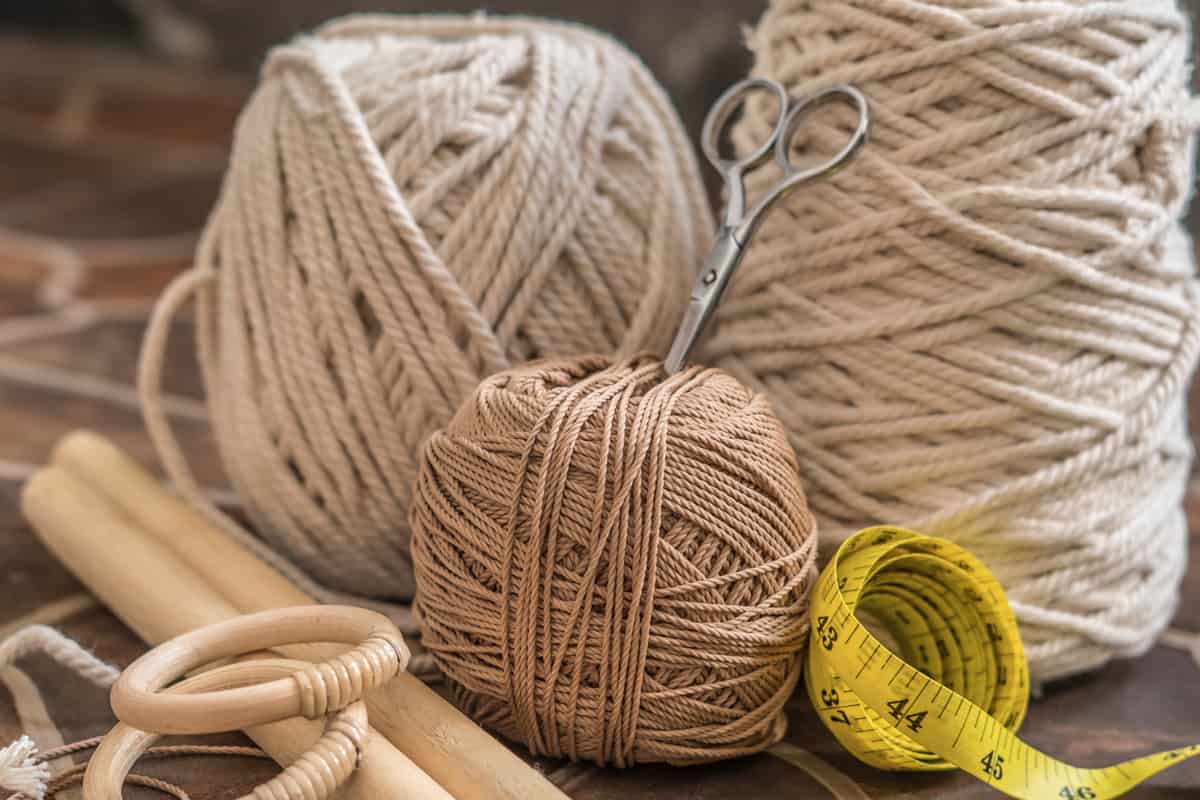
Macrame cord is the term used to describe the string or rope used in macrame. A string is the thinnest single-fiber strand, also called a single-twist string.
While some users will say that all macrame material can be called a cord, some experts and manufacturers will make the distinction that a cord is thicker than six millimeters and made up of either strings or rope.
Macrame rope comes in two-ply to six-ply ropes made up of string typically twisted around each other to form a stronger rope. Ply is the number of strands that come together to make the string or cord.
The most common type is three-ply, which means three strings are twisted together to make the rope. Macrame cords come in waxed and unwaxed varieties and can be braided or twisted.
What Material Is Used For Macrame?
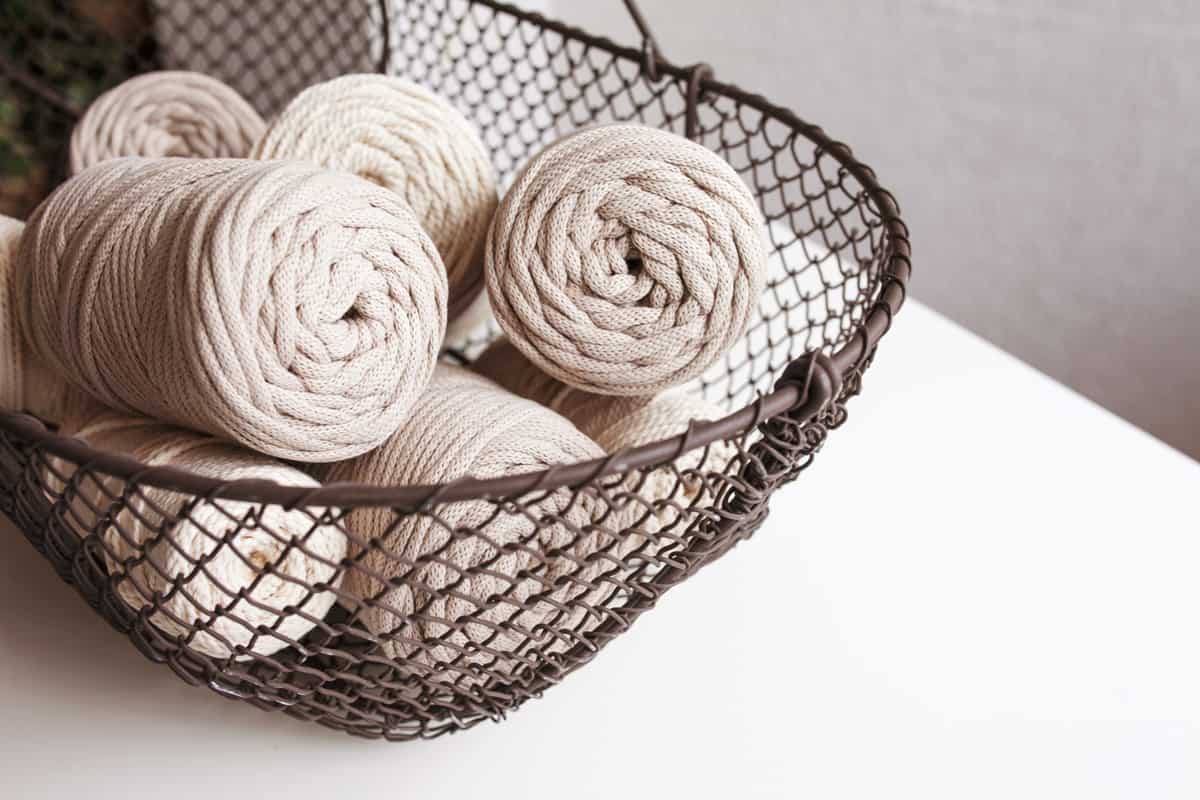
Macramae, or the art of using knots instead of weaving, knitting, or crocheting to make different items, dates back to ancient times when plant-based materials like hemp and jute were used.
In modern times the most common material is cotton or a blend of synthetic fibers. Any material that can be knotted may have an application in the macrame space.
Types Of Macrame Cord And Their Uses
Macrame Rope: A Versatile Cord For Beginners
Many beginners start with a three-ply macrame rope as it is neither too fine nor too thick and can be a great medium for learning the different knot styles.
Clothesline is an example of a braided macrame rope and is a low-cost medium for practice projects.
Click here to see this rope on Amazon.
Wax-Covered Or Synthetic Rope: Great For Outside Projects
For outdoor projects like hammocks or outside planters, you'll want to use a weather-resistant material like a wax-covered rope or synthetic cord.
Click here to see this synthetic cord on Amazon.
Wax-covered or synthetic materials are also used in making items like key chains, furniture coverings, or rugs that see a lot of wear and tear. If you're making fireplace decorations or potholders, you should use a synthetic, heat-resistant material.
Another option for outdoor projects would be a heavy-duty jute-style cord. This cord is great for garden-style decoration and would be a good choice if your project is both outdoor and weight-bearing.
Click here to see jute twine on Amazon.
Braided Macrame Rope: Good For Weight-Bearing Projects
Hanging planters and hammocks are popular examples of functional weight-bearing macrame projects. For these projects, you can choose a braided macrame rope with a heavier, thicker gauge. For chair seats or shelves, choose a stiffer, thicker fiber.
This braided nylon twine can be used for outdoor and indoor projects. The fabric pulls knots into place during use to make a tighter durable weave.
Click here to see this nylon twine for macrame on Amazon.
Macrame String: Great For Tiny Knots
Macrame string is the most basic component of macrame cords. It is typically single-fiber and lightweight and can be difficult for beginners to maneuver. When working with string, work carefully and frequently check your work for pulling and uneven knots.
You should use string for tiny, intricate knots. Practitioners like to use it for tight, detailed work. You should use coated or nylon string for projects like earrings and bracelets. This string is fine enough and durable enough to stand up to daily wear and tear.
Click here to see waxed string for macrame jewelry on Amazon.
Macrame string that is three millimeters or less in diameter is usually used for popular projects like macrame feathers or leaves. This video shows how you can use macrame string to construct a feather or leaf.
Macrame String: Great For Straight Fringe
For projects that need a straight, clean fringe, use macrame string. You can brush the ends out with a comb to make a soft straight fringe that can be trimmed into sharp, clean shapes and edges.
For wavy fringe, you may choose to use two or three-ply macrame rope. We do not recommend braided rope for long fringes as it will fray and fuzz as you brush.
Can You Use Regular Yarn For Macrame?
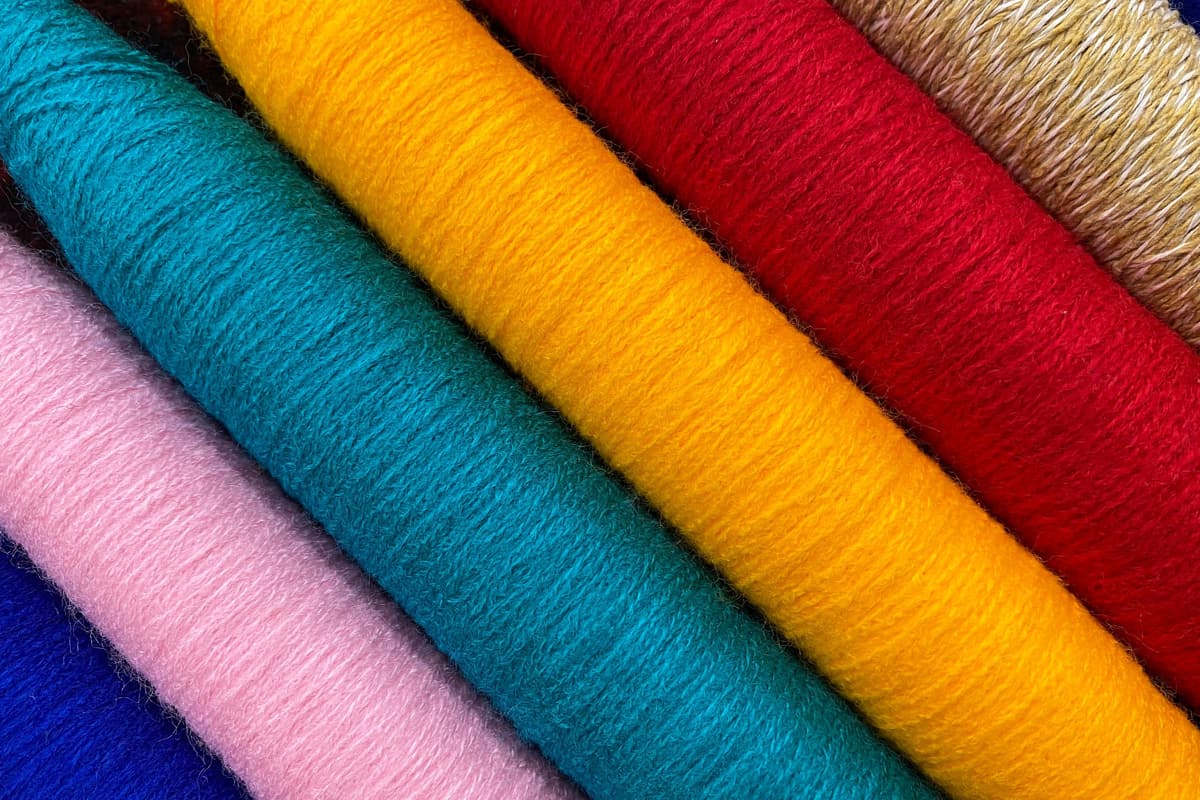
Regular cotton yarn is not usually a first choice among macrame experts, but it does have some application for specific projects. Yarn does compress easily and will make small tight knots. It can be used in projects that are typically sprayed with a stiffener or a lacquer.
When you brush yarn, it becomes light, fluffy, and wavy. Many crafters use macrame feathers made from yarn as a lower-cost substitute for ostrich or flamingo feathers. This video shows how to use regular yarn to make feathers for a lamp.
For another take on using yarn for macrame, see our article, "Can You Use Cotton Yarn For Macrame?"
Is Macrame An Expensive Hobby?
Cost can be a factor when choosing how will use your macrame cords. Large, intricate projects that require high-quality materials tend to be more expensive.
You can offset the costs by selling or giving these items as gifts since making these items yourself will be much more cost-effective than buying them in a specialty store.
Using macrame projects as functional decorations and gifts may also lower the overall costs and can raise the value of your finished product. Planning your projects and materials well will help economize materials and time.
You can try starting with less expensive projects. You can choose simple items like key chains and coasters. Larger, tighter-weave projects with intricate knots will be more expensive to produce than fringe-heavy, loosely knotted projects or smaller items.
Final Thoughts
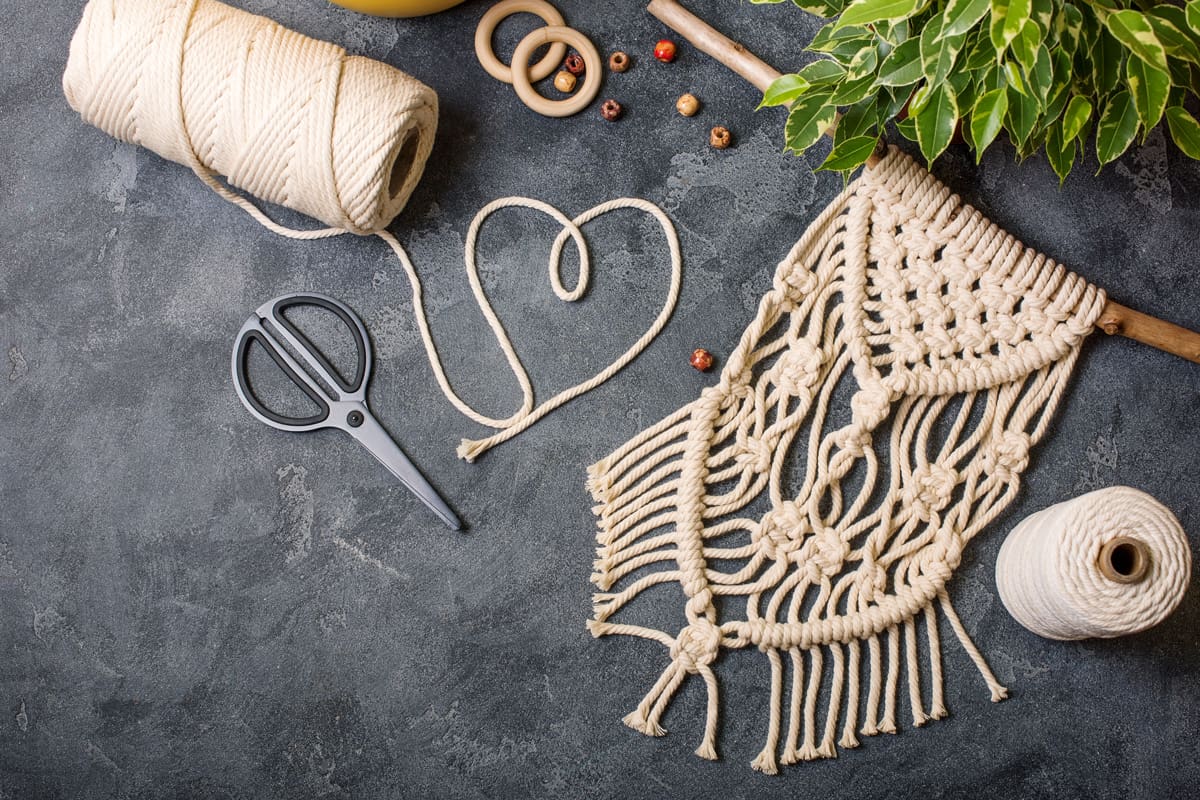
Now that you know more about the kinds of macrame cords and ropes and how you might use them, get creative! This ancient pastime is a great way to make both modern and nostalgic decorations that will add beauty to your space for years to come.
Made it to the end? You may also be interested in the following.
Macrame Tips And Tricks: How To Create Professional-Looking Creations







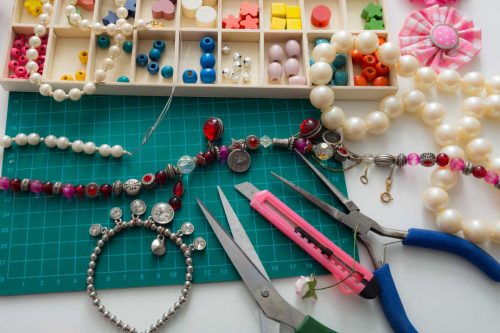

![Read more about the article How To Glue Glass Beads To Glass [6 Steps]](https://craftsbliss.com/wp-content/uploads/2020/10/Different-colored-glass-beads-on-a-white-background-500x333.jpg)
![Read more about the article How to Make Paper From Sawdust or Wood [8 Steps]](https://craftsbliss.com/wp-content/uploads/2020/12/Scattered-wooden-sawdust-and-blank-old-burnt-paper-sheet-for-drawings-on-dark-concrete-surface-in-carpentry-workshop-500x333.jpg)
![Read more about the article How To Get A Smooth Paint Finish On Wood [A Complete Guide]](https://craftsbliss.com/wp-content/uploads/2021/09/Painting-timber-boards-outside-with-the-white-paint-500x333.jpg)